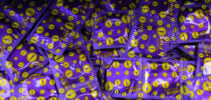The “isolation” of the new virus was reported on May 20, 1983 in an article published in the American magazine Science.
ADVERTISING
The authors of the discovery – Françoise Barré-Sinoussi, Jean-Claude Chermann and Luc Montagnier – adopted a cautious tone: the virus “could be involved in several pathological syndromes, including AIDS”, wrote the French virologists.
AIDS research was just beginning. The disease was new and represented many mysteries.
“Four H disease”
The first warnings came from the United States two years earlier. In the summer of 1981, rare diseases such as pneumocystosis and Kaposi's sarcoma were reported among young American homosexuals.
ADVERTISING
Doctors wondered why “opportunistic” infections usually reserved for people in fragile health appeared in young, healthy homosexual men.
American experts spoke of an “epidemic among homosexual men and drug users”. The disease had no name and was spreading.
The Haitian population was also affected. The term “three H disease” was coined in reference to “homosexuals, heroin users and Haitians”.
ADVERTISING
Soon a fourth “H” would be added: hemophiliacs, also affected, which changed the reference to “four H disease”.
The term “AIDS” (acquired immunodeficiency syndrome) began to be used in September 1982.
Retrovirus hypothesis
The cause of AIDS remained unknown. Some, like Roberto Gallo, a leading American expert on cancer-causing viruses, were looking for a “retrovirus.”
ADVERTISING
Across the Atlantic, in Paris, the viral oncology laboratory run by Luc Montagnier of the Pasteur Institute also began research.
In early 1983, Parisian infectious disease specialist Willy Rozenbaum collected a sample of lymph nodes from a patient in the early stages of AIDS at the Pitié-Salpêtrière Hospital.
His sample arrived on January 3rd at the Pasteur Institute laboratory benches. “I started working,” said Montagnier, who died in 2022, in his book “On Viruses and Men”.
ADVERTISING
With Françoise Barré-Sinoussi and Jean-Claude Chermann, he detected a new retrovirus that was named LAV for Lymphadenopathy Associated Virus.
“We isolated the virus, we showed that it was a retrovirus, but we were still not sure that it was the cause of AIDS,” Barré-Sinoussi told AFP.
“No one believed”
Publication of the discovery in May in the journal Science was met with skepticism, particularly by Gallo.
Pasteur's team was increasingly certain that his LAV was responsible for AIDS. Montagnier presented data to this effect in September 1983 to some experts, including Gallo.
“For a year we knew we had the right virus (…) but no one believed us and our publications were rejected”, recalled Montaigner.
In the spring of 1984, Gallo presented a series of articles announcing the discovery of a new retrovirus, HTLV-3, presented as a “probable cause” of AIDS. On April 23, Margaret Heckler, United States Secretary of Health, made the announcement official together with Gallo.
That same day, Gallo filed a US patent for an AIDS test based on his discovery, which was quickly granted. A similar request previously submitted by Pasteur after the discovery of the LAV was rejected.
However, Gallo and Montaigner quickly agreed that HTLV-3 and LAV were probably the same organism.
Proof of this appeared in January 1985. The new virus was finally named HIV, human immunodeficiency virus, in 1986.
France and the United States disputed the paternity of the discovery until 1987, the date of a bilateral agreement according to which Gallo and Montagnier were called “co-discoverers” of the AIDS virus.
The dispute was not only a question of scientific honor, but above all financial, due to the copyright of the detection tests derived from the discoveries.
The real epilogue would come in 2008, when the Nobel Prize in Medicine was awarded to Frenchmen Montagnier and Barré-Sinoussi “for the discovery” of HIV.
Read also
* The text of this article was partially generated by artificial intelligence tools, state-of-the-art language models that assist in the preparation, review, translation and summarization of texts. Text entries were created by the Curto News and responses from AI tools were used to improve the final content.
It is important to highlight that AI tools are just tools, and the final responsibility for the published content lies with the Curto News. By using these tools responsibly and ethically, our objective is to expand communication possibilities and democratize access to quality information. 🤖




